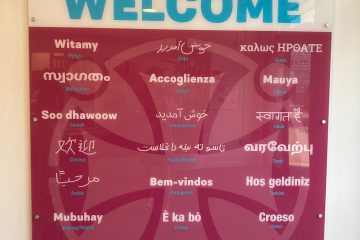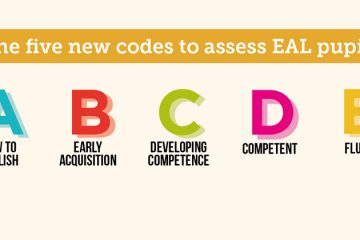New-to-English secondary pupils – from learning in class to learning at home
Kindly contributed by our guest author: Caroline Scott – Director, Across Cultures – June 2020

This upsetting case is highlighted by Kamil Trzebiatowski, former EAL Co-ordinator in a large secondary school in the UK. It’s a common story in many schools, where it’s not unusual for learners with little or no English to struggle to access the English-speaking mainstream.
In this environment, learners have the challenge of learning everyday language, including the language needed to function generally in society, as well as the academic and technical language required to access the curriculum (Cummins, 2001). They are doing so alongside the added challenge of learning to live in a new culture with new norms and values.

Teachers have a duty to cover the curriculum provided by the government, which has an intense focus on content, rather than literacy. One of the resulting outcomes is limited assistance for secondary teachers on supporting language development alongside content. There may not be enough time allowed to plan for this support, or insufficient staffing or physical resources available to help the learners. There may be a shortage of mother tongue support, an absence of leadership support – or just a general lack of understanding of what can be done. On many occasions, therefore, learners can feel excluded in classes, and are unable to access content, form solid friendships or know how to help themselves learn (both language and content). Not surprisingly, they are often overwhelmed by the sheer scale of the task in hand.
My name is Caroline Scott and I run an EAL online blended learning programme for learners in schools (both secondary and primary) – www.learningvillage.net. Daily, I deliver remote training supporting teachers in the use of this programme’s resources. In every school, whether it is highly skilled and resourced or not, a new-to-English learner will always be significantly challenged by their circumstances. In a best-case scenario, a school will have a flexible, supportive procedure in place to cushion the learner and teachers will plan collaboratively to offer differentiated EAL support in many forms.

I learn a lot from speaking to schools every day. In the current climate, where school closure has changed the way we teach, I see schools approaching EAL home learning in a variety of ways – each of which comes with its own set of challenges. We have, for the present, moved from a situation where learners were often included in the classroom yet felt excluded, to one where learners are completely isolated – a tough circumstance for a new learner just embarking on their English-medium education.
The EAL blended learning resources we’ve created, with the help of many pilot schools, are designed to offer learners part of this ‘cushion of support’ they need to help them with learning vocabulary and language structures, as well as to build learner confidence (whether the learner is remote or school-based). The resources can help in many ways:
- They support learners of ANY language and ANY schooling background (whether they are literate or not) with accessing English, thanks to their image-based approach and the blended independent and small group methodology offered.
- They support teachers (including those who feel under-skilled) in developing supportive, accessible learning experiences linked to the curriculum.
- They provide learners with the necessary skills and tools to help them learn English beyond the classroom, by giving them ownership of a supportive, engaging, language-learning strategy.
- They provide supportive resources for teaching basic fundamental language, from colours, counting and classroom language, through to the use of the past tense – and beyond.
- They provide age-appropriate phonics lessons adapted for EAL learners, as well as lessons covering the first 2,000 high frequency words.
- They offer supportive academic and technical language to mirror the curriculum, providing learners with much-needed basic curriculum starting language (focusing both on vocabulary and language structures).
- They provide translation into around 100 languages.
- They guide learners slowly, from speaking and listening, to reading and writing, through carefully scaffolded resources.
- They offer repetitive sentence patterns, to support the application of language in many contexts.
- They recognise the benefits and power of the use of a learner’s mother tongue in activities and encourage this wherever possible.
You may already be using the Learning Village. If not, there’s a lot to be gained from asking yourself how you are providing the support listed above. To find out more about the Learning Village, 11-18 (The Islands), click here: www.learningvillage.net
References
Cummins, J. 2001 Language, Power and Pedagogy, Bilingual Children in the Crossfire, Multilingual Matters
Trzebiatowski, K. http://valuediversity-teacher.co.uk/eal-excluded-by-inclusion/



0 Comments